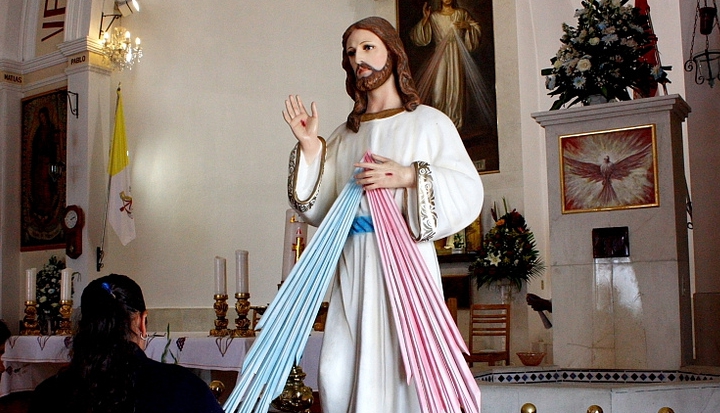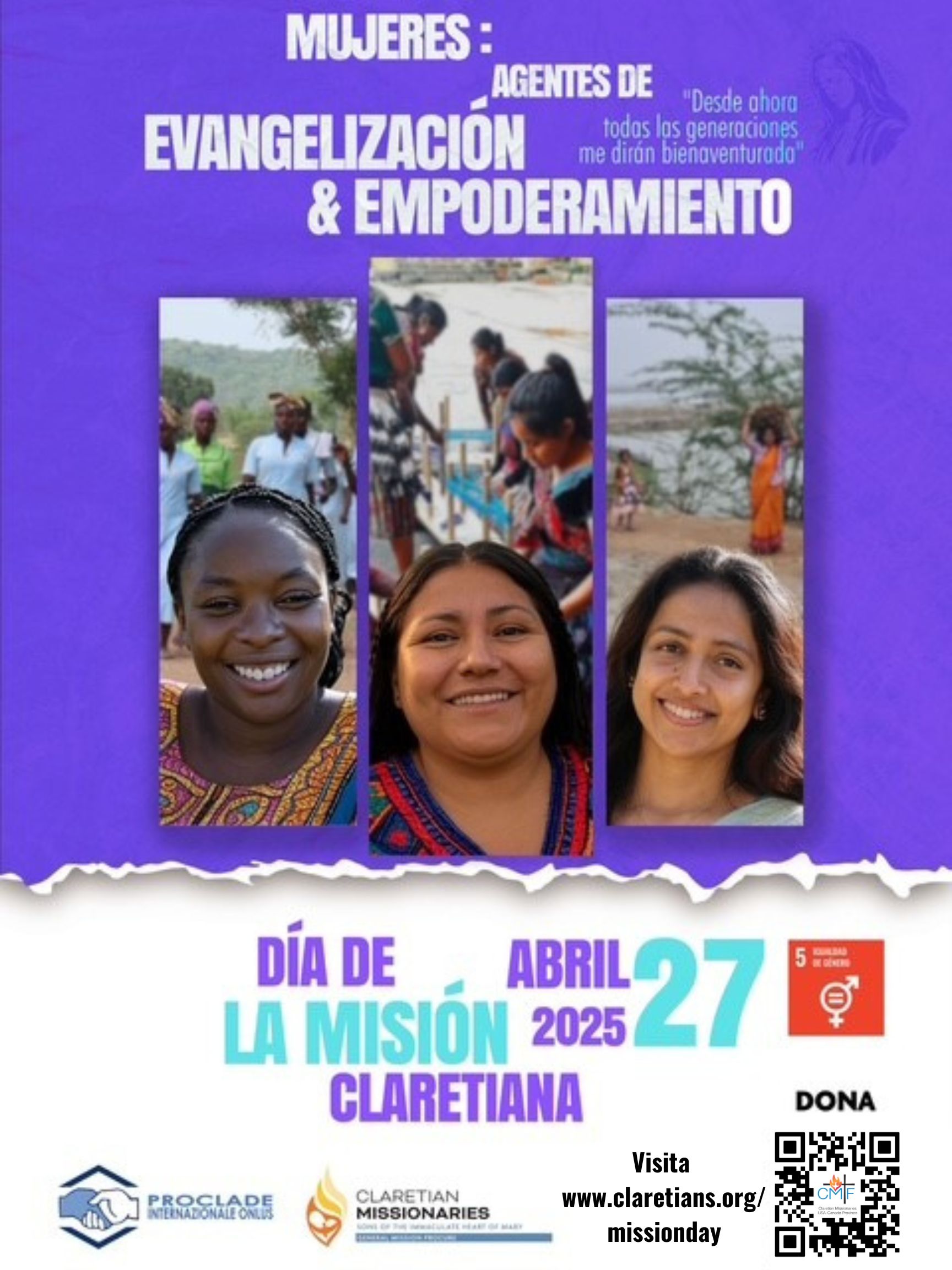The world was in the midst of the Great Depression in 1931 and the memories of World War I were still very much alive in the minds of Europeans when in Poland a sister of the Congregation of Sisters of Our Lady of Mercy, Faustina Kowalska (1905-1938), is said to have been personally visited by Jesus.
According to her diary, which was listed on the Index of Forbidden Books for more than 20 years, an image was revealed to her of the risen Lord, from whose heart shone two rays, one red (representing blood) and the other “pale” (symbolizing water), with the words “Jesus, I trust in you” at the bottom. Faustina wrote in her diary that Jesus told her, “I promise that the soul that will venerate this image will not perish.”
When she was canonized in 2000 under the direction of fellow countryman Pope John Paul II, he proclaimed that the Second Sunday of Easter would henceforth be known as Divine Mercy Sunday, thereby widely promoting the devotional practices associated with Faustina’s visions, already popular in many communities.
St. Faustina, a poorly educated daughter of a humble Polish family, kept a 600-page diary of the apparitions she claimed continued for years. Her entries focus on God’s mercy, the call to accept God’s mercy and to be merciful, the need for conversion, and the call to trust in Jesus. It had been Jesus’ own wish, she wrote, to establish a feast day: “I [Jesus] desire that the Feast of Mercy be a refuge and shelter for all souls. . . . I am giving them the last hope of salvation; that is, the Feast of My Mercy.”
Among the practices associated with the devotion are its novena, the Chaplet of the Divine Mercy (a series of prayers organized similarly to a rosary), the Hour of Great Mercy (a time of prayer traditionally celebrated at 3 p.m.), and the plenary indulgence granted to those who receive the Eucharist and celebrate reconciliation on Divine Mercy Sunday.
But the road to the universal recognition and institutionalization of the devotion was anything but smooth. Since Sister Faustina’s diary, which she claimed Jesus himself had asked her to keep, had been previously listed on the Index of Forbidden Books, it curtailed the exercise of the devotional practices. Detractors claimed that her writing contained theological errors, while her defenders attribute mistakes to a faulty translation from Polish to Italian. While the diary is no longer on the Index and her canonization has officially put away concerns regarding the orthodoxy of her writings, critics remain.
The celebration of Divine Mercy Sunday is an opportunity to reflect on the theme of how God’s mercy can overcome sin and, as the Congregation for Divine Worship and the Discipline of the Sacraments states, “a perennial invitation to the Christian world to face, with confidence in divine benevolence, the difficulties and trials that mankind [sic] will experience in the years to come.”
This article appeared in the May 2011 issue of U.S. Catholic (Vol. 76, No. 5, page 46).
Image: Flickr cc via Catedrales e Iglesias/Cathedrals and Churches













Add comment